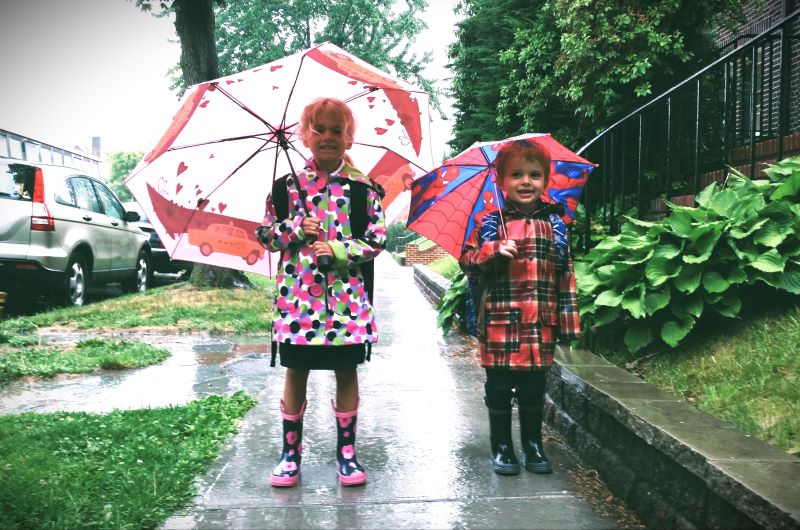If one walks into a men’s clothing store in the winter, he will inevitably see designer raincoats for sale. If one owns such raingear, or some other garment that is respectable to wear in Hashem’s presence, he may wear it for Shemoneh Esrei. However, a poncho, or a raincoat made of undignified material or color, should not be worn for tefillah.
During the winter, some people wear boots, rubbers and other footwear to keep their feet dry. In some countries it would be considered respectable to wear rain boots visiting a distinguished person, and one may keep them on during tefillah. In a place where such clothing is not considered honorable, one should remove them before tefillah (Daas Sofer, Yoreh De’ah, 7).
On a rainy day in a crowded shul, taking off one’s boots might result in a loss. Concern about such a possibility could seriously interfere with one’s concentration during Shemoneh Esrei. Under such circumstances, if he doesn’t have a safe place to store them, he may pray while wearing them, in order to preserve his concentration (Leket Kemach Hachadash 91,8).
People who wear hats sometimes cover them with nylon covers, to protect them from getting ruined in the rain. A cover which is tight-fitting, so that it takes on the shape of the hat, may be worn for Shemoneh Esrei. The general principle is that on a rainy day, respectable-looking rain gear may be worn during Shemoneh Esrei (Rav Shlomo Zalman Auerbach as cited in Halichos Shlomo 2,18).
The Deeper Meaning of Clothing
While we tend to look at clothing as a matter of course, the Torah views one’s apparel in a different light. Every day of the year and each situation has its own specific type of clothing. For example, the Torah goes to great lengths to describe the garments of the kohanim and the kohen gadol.
Prayer requires a special code of dress, as does entering a shul. We must appear before Hashem in a dignified manner. Since prayer is meant to be service of the heart, and does not usually focus on outer trappings, why does one’s clothing play such a central role?
On the first day of their existence, Adam and Chava sinned by eating from the tree of knowledge. As a result, the evil inclination that had previously been an external force entered the chambers of their hearts and minds. Once the evil inclination was inside their bodies, Adam and Chava had a much harder time discerning good from evil.
Before the evil inclination entered man, he was able to judge situations based on the facts alone. External factors played a very insignificant role in the process of his decision-making. With the evil inclination inside man, he became much more susceptible to the influence of outer appearances and superficial trappings (Rambam, Moreh Nevuchim).
Hashem assisted Adam and Chava in their new life situation by giving them garments. Clothing provided a way to acclimate themselves to this new environment. Changing garments to suit different circumstances aids man to adapt to various life situations.
During prayer, Hashem is primarily concerned with what is taking place in the innermost chambers of one’s heart. However, the way that a person presents himself during tefillah is a sign of his recognition of the Divine reign in this world. Before the commencement of prayer, we must ensure that we are clothed in the proper attire to undertake this elevated experience.
The clothing we wear during prayer,
Should befit the grandeur of Hashem.
Text Copyright © 2012 by Rabbi Daniel Travis and Torah.org


